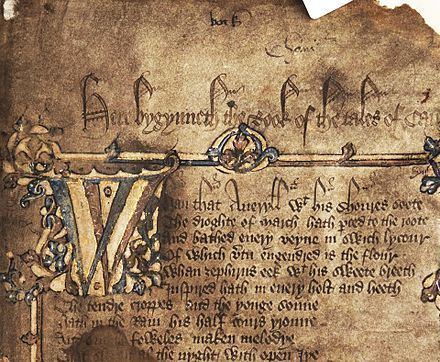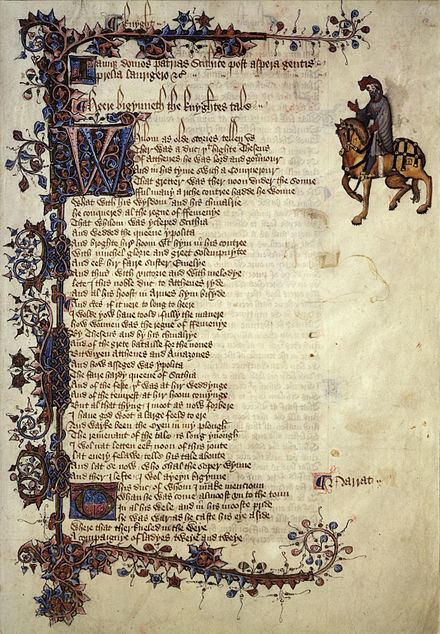Name Adam Pinkhurst | ||
 | ||
Adam Pinkhurst was a fourteenth-century English scribe. He is widely thought to have worked for Geoffrey Chaucer.
Contents

Biography
While little is known with certainty about his life, it is clear that Pinkhurst worked in late fourteenth-century London. He was a member of the Scriveners' Company, which has preserved an example of his handwriting.
Identification as Chaucer's scribe
It has been suggested that Pinkhurst was the scribe called Adam that Chaucer mentions in one of his poems, Chaucer words unto Adam his scrivener. The short poem takes a scribe called Adam to task for the many errors he introduces and the amount of work Chaucer has to do correcting them.
Adam scrivener, if ever thee befallBoece or Troilus for to write new,Under thy longe locks thow maist have the scall,But after my makinge thou write mor trew,So oft a day I mot thy werke reneweIt to correct, and eke to rubbe and scrape,And all is thorowe thy necligence and rape.On the basis of his first name, Pinkhurst was suggested as a possible candidate for "Adam scrivener" as early as the late 1920s. More recently, Pinkhurst has been proposed as the scribe of two important manuscripts of Chaucer's Canterbury Tales. The manuscripts in question, the Ellesmere Chaucer and Hengwrt Chaucer, are generally agreed to be by the same scrivener and are thought to be closely derived from Chaucer's holograph. In 2004, Linne Mooney identified the scribe in question, hitherto known to scholars as Scribe B, as Pinkhurst. Mooney, then a professor at the University of Maine and a visiting fellow at Corpus Christi College, Cambridge, proposed to match Pinkhurst's flamboyantly written signature on an oath he signed to the handwriting in these early manuscripts of the Canterbury Tales.
If correct, this discovery would be significant in shedding light on the relationship between a writer, his scrivener and their manuscripts at that time; it would also contribute to our understanding of one of Chaucer's shortest works.
Based on their shared work on another manuscript, Pinkhurst has been suggested as a colleague of "Scribe D", another copyist of the Tales, and both scribes may have worked for the same bookseller or moved in the same literary circles.
Mooney's identification has, however, been questioned and doubted by several specialists, and it has by no means been accepted by all others. According to Christopher de Hamel, those who accept the identification as certain fact are at the "Wikipedia end of the spectrum".
